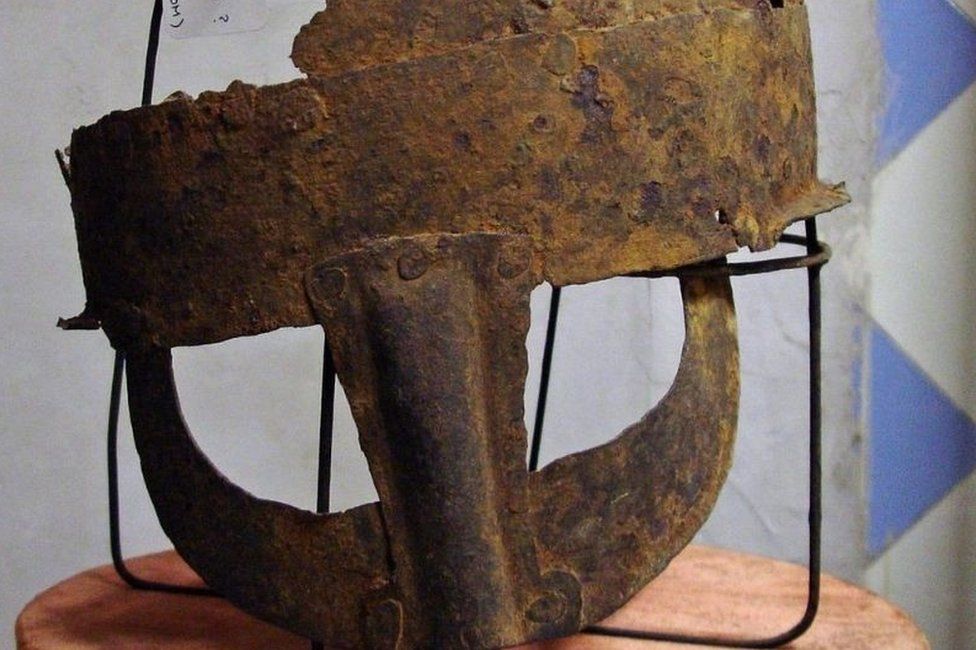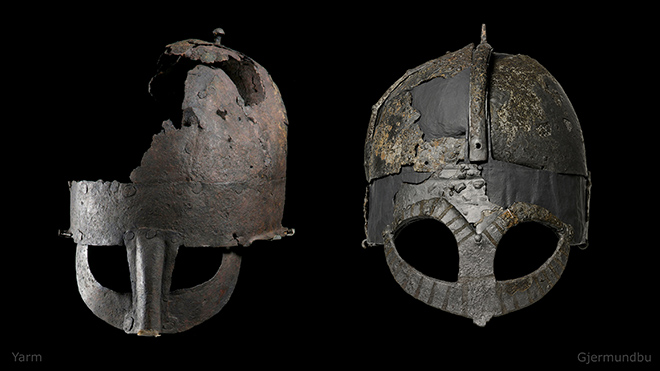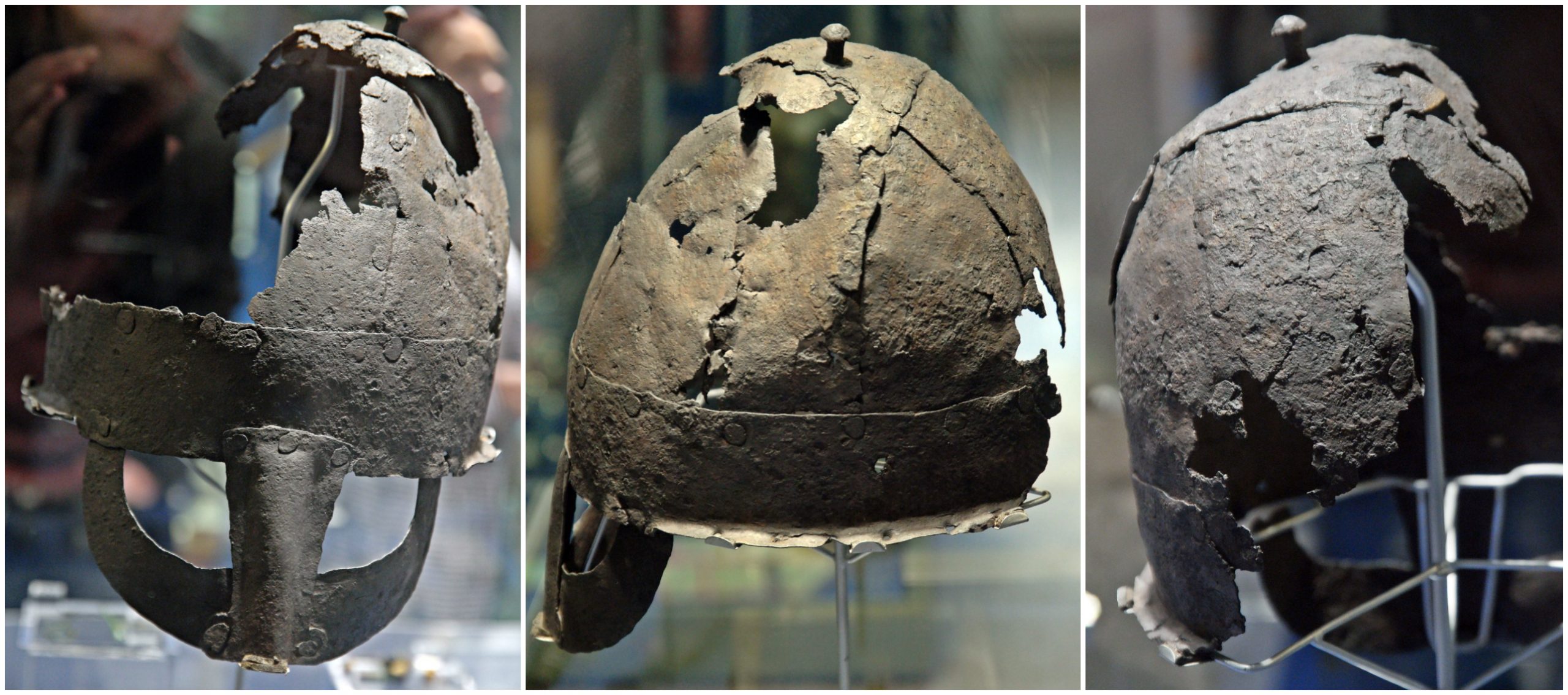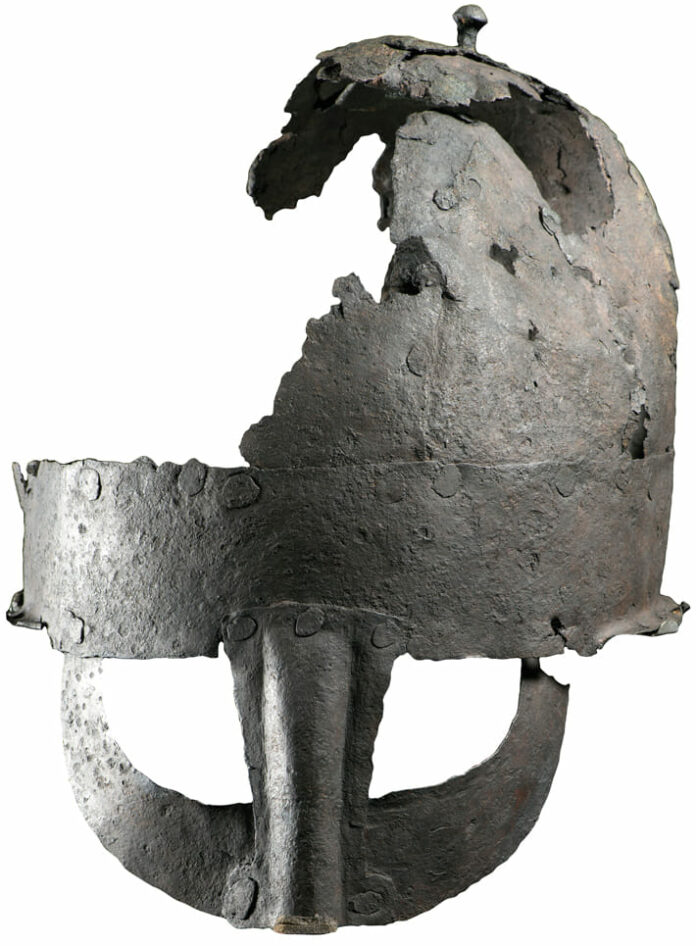In the unassuming town of Yarm, nestled in the northeastern corner of England, a remarkable archaeological discovery was made in the 1950s that would challenge long-held beliefs about the region’s Viking heritage. It began with the unearthing of a thin metal helmet during a sewer installation project, a find that was initially dismissed as a mere prop from a historical pageant. However, through meticulous analysis and the application of modern scientific techniques, this unassuming artifact has been revealed as one of the most significant Viking artifacts ever discovered in Britain.
The Enduring Mystery of the Yarm Helmet

When the helmet was first discovered, it didn’t fit the mold of what experts expected a medieval helmet to look like. With its thin metal plates, measuring just one to two millimeters thick, the helmet seemed far too fragile to have survived the ravages of time. Scholars questioned how such a delicate object could have remained intact for nearly a thousand years, leading many to dismiss it as a mere historical reenactment prop.
Unveiling the Helmet’s True Origins

It wasn’t until decades later, when the helmet was reevaluated by archaeologist Chris Caple of Durham University, that the true significance of this artifact began to emerge. Caple and his team utilized modern scientific techniques to uncover the secrets hidden within the helmet’s weathered surface. The presence of the mineral vivianite, which only forms in anoxic, waterlogged soil, revealed that the helmet had been protected from corrosion by the very conditions in which it was originally deposited.
Additionally, the buildup of the mineral akaganeite, a byproduct of iron corrosion in the presence of oxygen and salt, suggested that the helmet had been dislodged from its protective environment at some point, possibly in the 19th or early 20th century.
A Rare Glimpse into the Viking Past
Through their analysis, Caple and his colleagues were able to determine that the Yarm helmet is indeed a genuine medieval artifact, predating the Norman Conquest by nearly a century. The helmet’s design, which incorporates elements of both the hemispherical Anglo-Saxon helmets and the conical European designs of the 11th and 12th centuries, suggests that it belonged to a Viking who had settled in northern England after the Norse invasions that began in the 8th century.
Engineering Marvels of the Viking Era

The Yarm helmet also provides valuable insights into the sophisticated metalworking techniques employed by Viking craftsmen. The use of hot-punched rivets to create a smooth outer surface, as well as the thin, lightweight construction that still offered sufficient strength to withstand blows, demonstrate the ingenuity and practical considerations that went into the design of these iconic warrior’s helmets.
Preserving and Celebrating a Viking Legacy
The rediscovery and renewed appreciation of the Yarm helmet serves as a powerful reminder of the enduring legacy of the Vikings in Britain. This rare and well-preserved artifact not only sheds light on the cultural and technological advancements of the era but also inspires a deeper understanding and respect for the rich history that lies beneath the surface of our modern world.
The story of the Yarm helmet is a testament to the power of perseverance and the transformative nature of scientific inquiry. What was once dismissed as a mere historical prop has now been elevated to its rightful place as a treasured relic of the Viking age, illuminating the remarkable achievements and resilience of these seafaring warriors. As we continue to uncover and preserve such invaluable artifacts, we deepen our connection to the past and create a more comprehensive understanding of the forces that have shaped the world we inhabit today.
